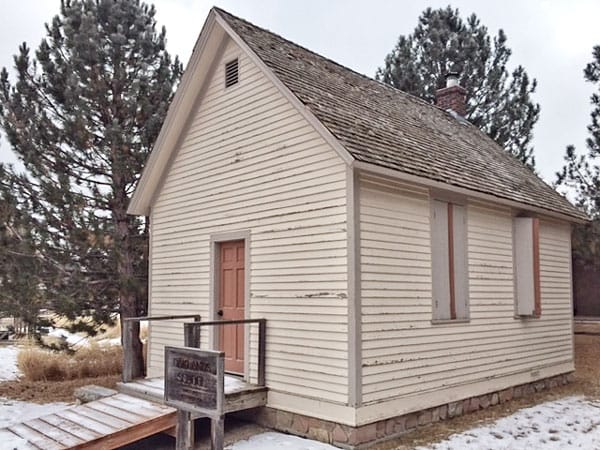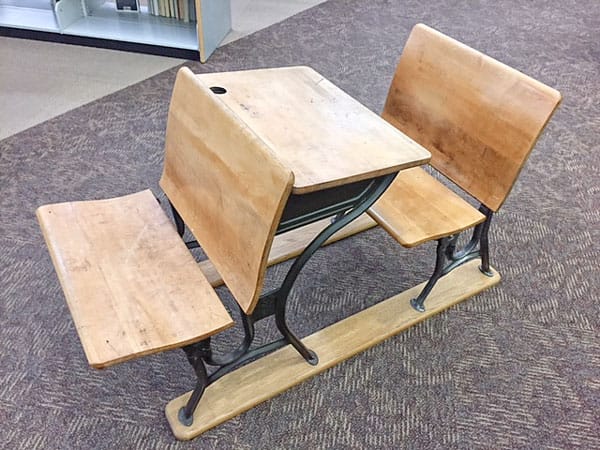Schools and schoolmarms

An old photo showing Round Top school circa 1910.
Article and photos by Joe Gschwendtner; photo courtesy of Douglas County History Research Center
Public education was so important that it was addressed in the Articles of Confederation by our Founding Fathers. The 1785 Ordinance for the Western Territory provided for schools by reserving sections NW16 and SE36 of every township open to homesteaders. Local government could then sell or rent those sections, using proceeds to support public education. Theoretically, children of 80108 residents “homesteading” 150 years earlier would have attended a one-room schoolhouse, either Happy Cañon or Round Top school.
In the classroom, the sole teacher was likely a female as young as age 16, since the only proficiency requirement was passing an eighth grade comprehensive exam. Sometimes students were as old as their teacher. Married women were generally dissuaded from teaching. Temperance, virtue and respectability were expected at all times. Strictness was demanded of those who would bring discipline to frontier children.
District 28 Happy Cañon school was not the standard building model. It was repurposed from a cabin built by the Schweiger family and previously occupied by the singing cowboy, Happy Jack Johnson. After Happy Jack moved on, it reopened as a school in 1899 and was staffed by Ms. Elizabeth Peight. Her closing roll call for that year included six Schweiger children, four Krolls and one Harry Barnes.

The rehabbed Oakland school was relocated from Highway 105 and Wolfensberger to South Street Elementary in Castle Rock (now South Ridge Elementary.)
Had the school remained, it would have occupied the flat opening behind the gate 200 yards south of the I-25 RidgeGate underpass on North Surrey Ridge Road.
District 13 Round Top school was built to utilitarian specifications of the day: rectangular (18’ x 24’), two high windows per side, pot belly stove, three rows of desks, a platform for the teacher’s desk, and room for up to 18 students. Educator Henry Bernard advocated at least 150 cubic feet of air per child, requiring high ceilings and making the building difficult to heat in winter. Pictures and satellite imagery indicate several other small outbuildings.

These would have been standard seats in the old schoolhouses; note the opening for the inkwell. Several originals can be found at the old Oakland school site. The school desks are part of the history collection for Douglas County Libraries.
Until 1896, the schoolhouse was located east of the Happy Canyon overpass near Round Top Hill. After School Board President Fred Chase initiated re-districting, it was moved to an east-facing hill, 300 yards west of the Happy Canyon southbound exit ramp. A rhyolite building visible today is but yards away from the old Round Top school foundation. The schoolhouse remained until 1953 when it was put up for sale by the county.
In her second year of teaching in 1927, Sarah Gleason had six students at Round Top. Two of them, Harold and Forrest Martin, accompanied her six miles daily to school in her Model T. Fifth grader Joe Grogan could be a discipline problem while “Little John” was a slow learner.
Far more was expected from a teacher than instruction. Being the only public building for miles around, schoolhouses were centers of community life. Funerals, church services, grange meetings, voting, dances and box socials were but some of the activities that were also a teacher’s responsibility. Next month, Sarah Gleason will “tell” you why she’d do it all again!